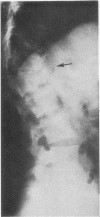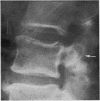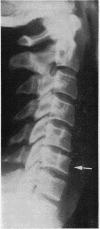Abstract
Spinal injuries and symptoms were studied in 109 ex-military parachutists and 112 sport (free fall) parachutists by means of postal questionnaires. 46 ex-military parachutists aged 50 years or over had a radiological examination of the lumbar spine and 58 sport parachutists had a radiological examination of the cervical spine as part of the survey. A history of back pain was significantly (P<0.01) associated with body weight in sport parachutists but not with the number of descents or with the subject's age. In the older ex-military group neither age, weight, nor the number of descents was significantly associated with backache.
Of those ex-military parachutists x-rayed, 10 (21·7%) were found to have vertebral body fractures (most frequently at D12), and 8 of these were unaware of these lesions. Vertebral fractures caused no disability and did not permanently curtail parachuting activities in either the sport or ex-military group.
Of the ex-military parachutists x-rayed, 84·7% had lumbar disc degeneration of all grades of severity, 17·4% had moderate changes, and 10·8% had severe changes. The frequency of moderate and severe disc degeneration was significantly related to age but not to body weight or to the number of descents. Spondylolysis was found in 2 subjects (4·3%) and spondylolisthesis unassociated with spondylolysis in 4 (8·7%). Spondylolisthesis was always associated with a history of back pain.
A low prevalence of radiological cervical intervertebral disc degeneration of all grades of severity of 8·7% was found among the free fall parachutists (mean age 33 years). 2 cases of cervical vertebral body fracture were seen, one related to a parachute landing injury and the other to a parachute opening injury.
This study does not implicate parachuting as a cause of intervertebral disc degeneration, either cervical or lumbar, nor as a cause of spondylolysis or spondylolisthesis. Serious long-term disability from pain appears to be uncommon among parachutists despite the frequency of the spinal trauma they sustain.
Full text
PDF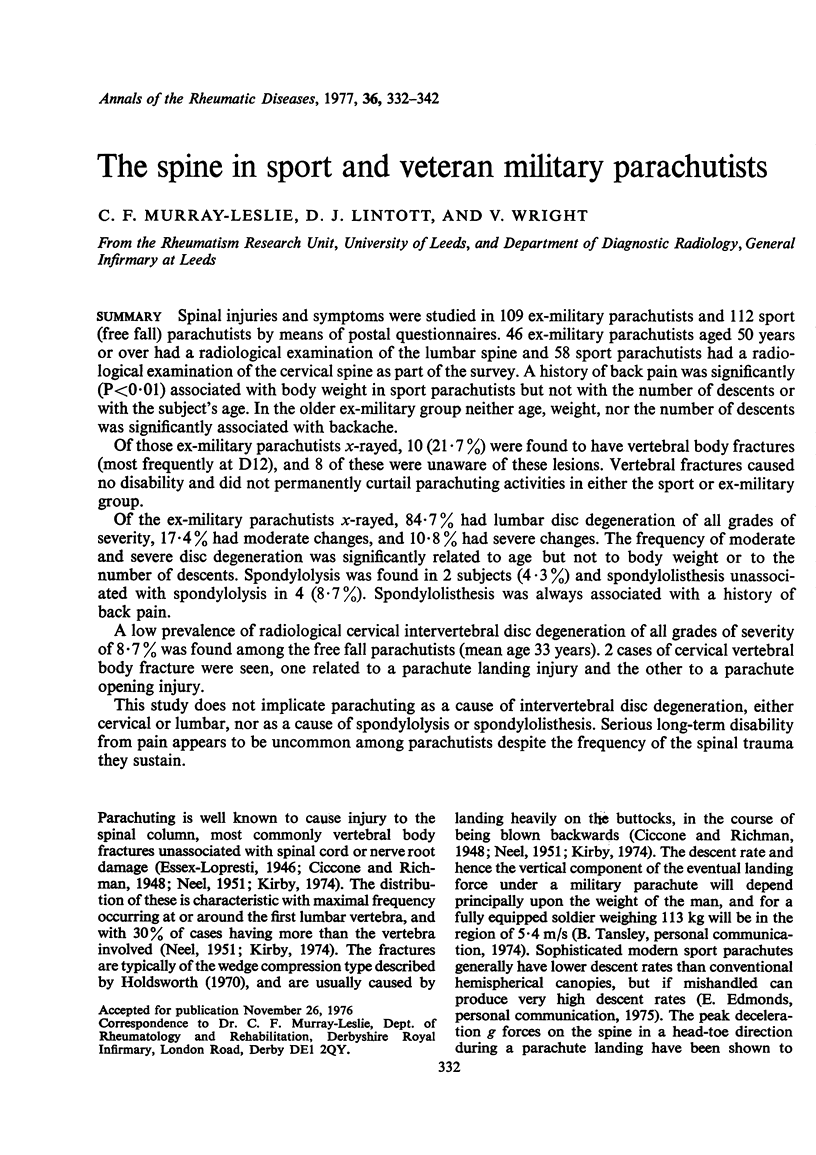
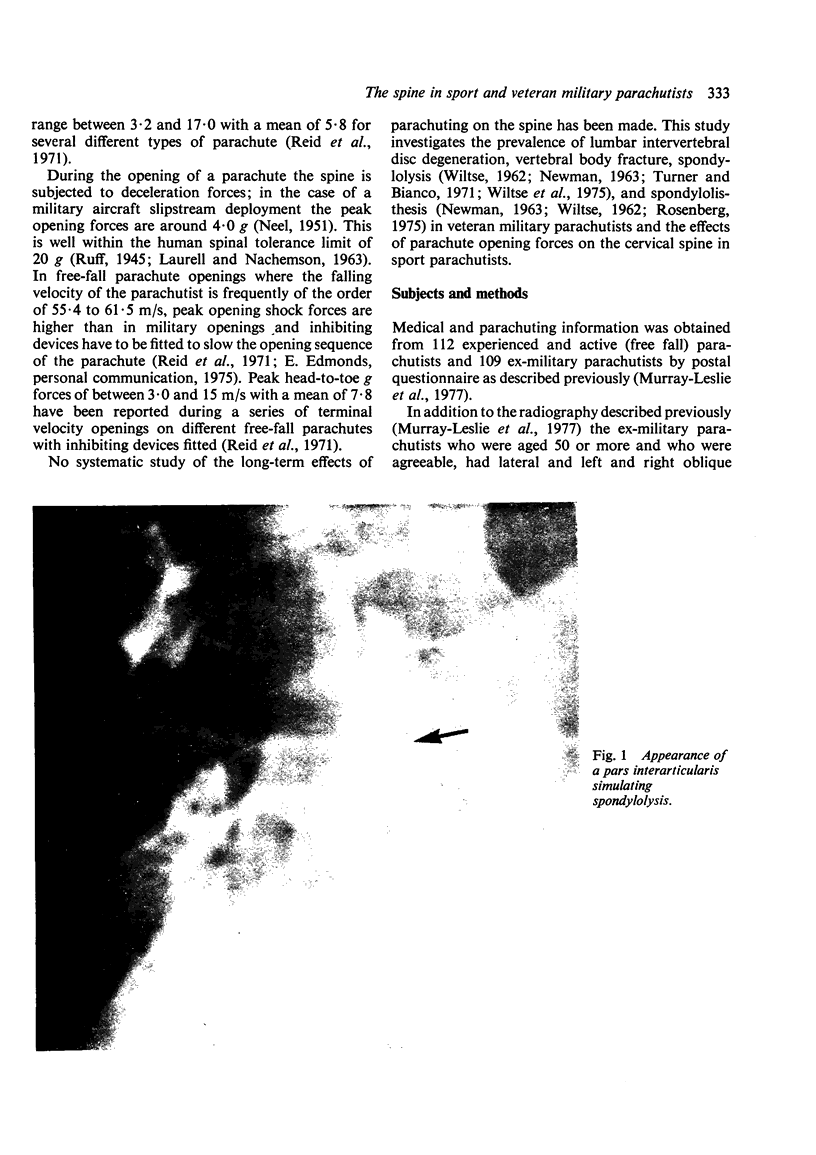


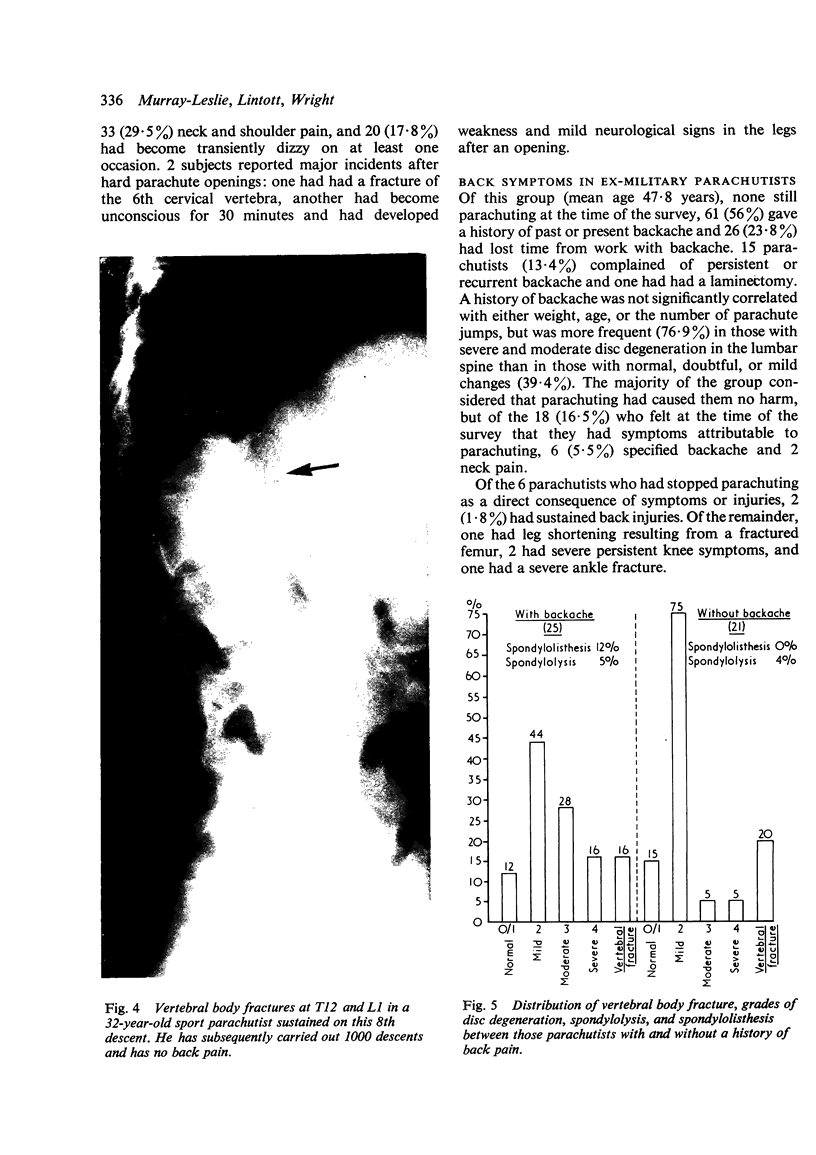

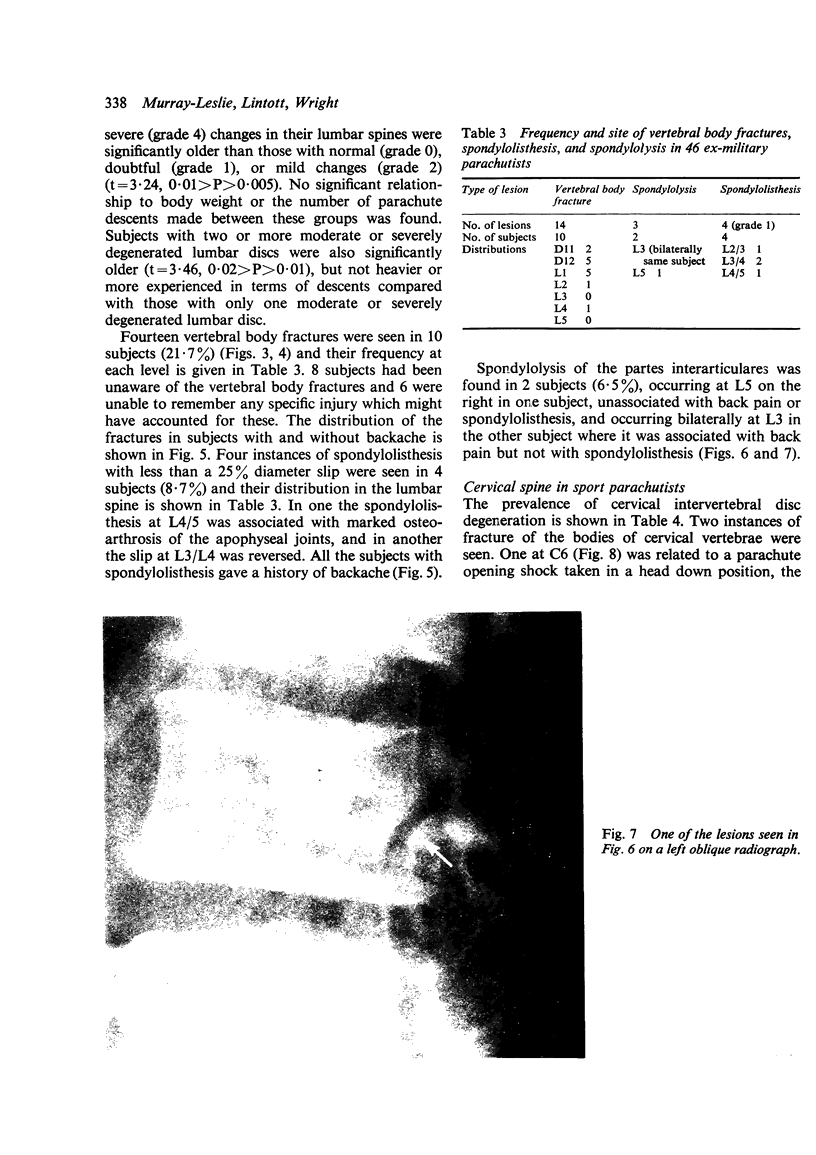
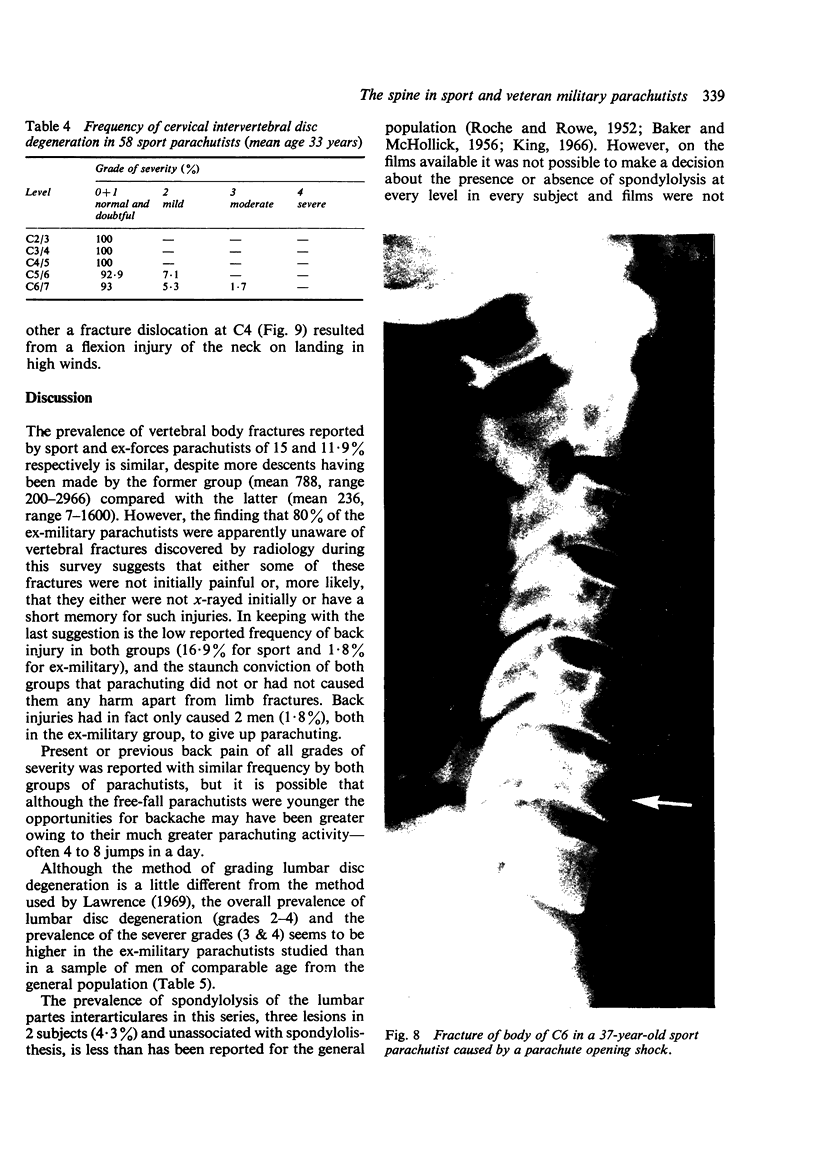
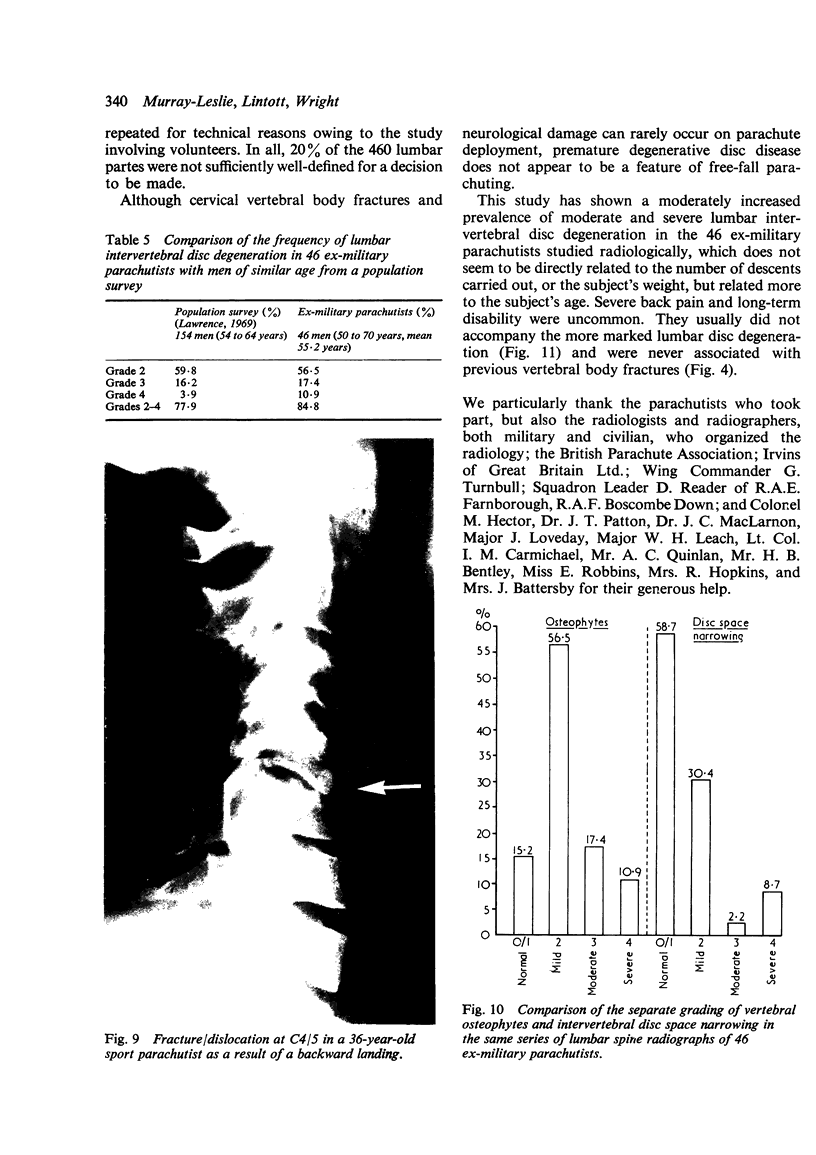


Images in this article
Selected References
These references are in PubMed. This may not be the complete list of references from this article.
- Holdsworth F. Fractures, dislocations, and fracture-dislocations of the spine. J Bone Joint Surg Am. 1970 Dec;52(8):1534–1551. [PubMed] [Google Scholar]
- Kirby C. N. Parachuting injuries. Proc R Soc Med. 1974 Jan;67(1):17–21. [PMC free article] [PubMed] [Google Scholar]
- LAURELL L., NACHEMSON A. SOME FACTORS INFLUENCING SPINAL INJURIES IN SEAT EJECTED PILOTS. Aerosp Med. 1963 Aug;34:726–729. [PubMed] [Google Scholar]
- Lawrence J. S. Disc degeneration. Its frequency and relationship to symptoms. Ann Rheum Dis. 1969 Mar;28(2):121–138. doi: 10.1136/ard.28.2.121. [DOI] [PMC free article] [PubMed] [Google Scholar]
- Murray-Leslie C. F., Lintott D. J., Wright V. The knees and ankles in sport and veteran military parachutists. Ann Rheum Dis. 1977 Aug;36(4):327–331. doi: 10.1136/ard.36.4.327. [DOI] [PMC free article] [PubMed] [Google Scholar]
- NEEL S. H., Jr Medical aspects of military parachuting. Mil Surg. 1951 Feb;108(2):91–105. [PubMed] [Google Scholar]
- ROCHE M. B., ROWE G. G. The incidence of separate neural arch and coincident bone variations; a summary. J Bone Joint Surg Am. 1952 Apr;34-A(2):491–494. [PubMed] [Google Scholar]
- Reid D. H., Doerr J. E., Doshier H. D., Ellertson D. G. Acceleration and opening shock forces during free-fall parachuting: physological studies of military parachutists via FM-FM telemetry. 3. Aerosp Med. 1971 Nov;42(11):1207–1210. [PubMed] [Google Scholar]
- Rosenberg N. J. Degenerative spondylolisthesis. Predisposing factors. J Bone Joint Surg Am. 1975 Jun;57(4):467–474. [PubMed] [Google Scholar]
- Turner R. H., Bianco A. J., Jr Spondylolysis and spondylolisthesis in children and teen-agers. J Bone Joint Surg Am. 1971 Oct;53(7):1298–1306. [PubMed] [Google Scholar]
- WILTSE L. L. The etiology of spondylolisthesis. J Bone Joint Surg Am. 1962 Apr;44-A:539–560. [PubMed] [Google Scholar]
- Wiltse L. L., Widell E. H., Jr, Jackson D. W. Fatigue fracture: the basic lesion is inthmic spondylolisthesis. J Bone Joint Surg Am. 1975 Jan;57(1):17–22. [PubMed] [Google Scholar]





